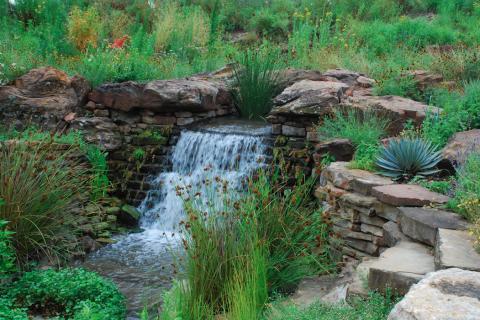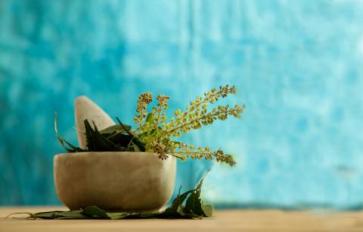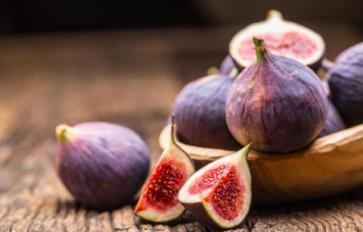
Did you know the flowers and vegetation you're growing might be invasive species? Native plants often get overlooked when people design their gardens and lawns, instead opting for popular plants from other regions. This is unfortunate, considering native plants are adapted to local environmental conditions which means they require far less water. They'll save you so much time, money, and water to care for, all while providing vital natural habitats for birds and other kinds of local wildlife. Here's why native plants matter and how you can grow them in your own backyard (or front yard!).
Why Native Plants Matter
Over the course of time, thanks to urbanization, the continental U.S. has lost a staggering 150 million acres of habitat and farmland. Sadly, that number is only increasing. This means human-dominated areas typically don’t support functioning ecosystems. When we do plant things in those urbanized spaces, it’s usually plants that have been imported from other parts of the world, aka non-native species.
The reason this is a problem is because local insects aren’t adapted to eat non-native plant species. They’ve evolved over time to eat native plants, which are naturally occurring in the region. When a plant is being attacked by an insect, it releases powerful chemicals to ward off the attacker. Without proper adaption to these defensive tactics, insects cannot eat a plant. Over time, local insects have specialized with native plants for thousands of years, enabling them to eat the plants. However, those same insects do not have any evolutionary exposure to plants that evolved on non-native soil, like India, China, or Russia. For these reasons, local insect life probably won’t even recognize non-native plants as food, nor would the insects be able to digest them.
The more native plants are wiped out, the less food these insects have, which can cause massive die off and terrible effects to our ecosystems. As you can imagine, this affects the food web in so many ways: Many animals feed on insects, such as birds and frogs. Without insects, their food source, they too will begin to die off, completely unbalancing the local ecosystem.
An example of an insect that can only feed on local, native plants is the beloved monarch butterfly. They only feed on milkweed, which is a native plant, and nothing else. Due to evolution, it’s able to break down the nasty chemicals in milkweeds. It’s unable to digest any other type of plant. This means if milkweeds get cut down, monarch butterflies will have nothing to eat, which will certainly put a damper on their population. In fact, if we completely destroy the plants these herbivores rely on, they’ll have nothing to eat and be doomed to extinction. This will cause a trickledown effect, hurting all the other animals that rely on these insects for food. Lots of your favorite local insects and animals will disappear, and you’ll be scratching your head as to why, unless you understand the importance of native plant species.
Benefits Of Growing Native Plants
There are several benefits to planting native plants as well. Here are a few benefits:
- Once established, native plants are super low maintenance.
- There are many native plants with beautiful showy flowers and leaves in an abundance of colors and patterns.
- Native plants do not require absurd amounts of chemical laden fertilizers, resulting in a healthier living space for humans as well.
- Many native plants (like oaks and maples) can help store the greenhouse gas carbon dioxide, combating climate change.
- Native plants are adapted to their natural landscape, so they require far less water to thrive.
- Native plants provide habitat and food for several animals, specifically pollinators like hummingbirds, bees, butterflies, moths, and bats.
How To Grow Native Plants
So now that you know native plants matter, and why, how do you go about growing them? Well, it all starts with knowing what’s native to your area. I live in New York, so what’s native here might not be what’s native in Texas, for example. The best way to find out what the native plants in your area are is to google them or use Audubon’s native plant database. The database will tell you what the best native plants are for birds in your area, which is pretty great. You just need to put in your zip code.
Once you know and understand what’s native to your area, it’s time to actually find native plant seeds you can plant in your own backyard. The best way to do this is to go to a local plant nursery and ask if they have any native plant seeds. It’s best to be specific about what plant you’d like too. For example, if milkweed is native to your area, go in asking for some milkweed seeds.
Yet another option is to find a local Facebook group that’s specific to your neighborhood or state for nature. I belong to a nature group on Facebook that is for my specific region of New York. In that group, I’ve found people who know where to get local native plant species seeds. In fact, some people in that group themselves grow them and are willing to give seeds free of charge. I highly recommend finding a group like this, as it can be invaluable. Yet another option is to find your local parks department online and see if they have any native plant initiatives going on. They may be willing to part with some native plant seeds if you contact them and ask.
Once you have the seeds, be sure to follow planting instructions for them, based on what you’ve read about them online. Or ask an expert you got the seeds from. They should know exactly how and where to plant them, how much water to give them, if they like shade, and all those important details. Worse comes to worse, look up how to care for the plant online. Once it’s planted, you’ll be amazed at how beautiful your yard will become. You can create an oasis for so many living creatures in your local area and have a beautiful display too, without harming the ecosystem.
Are you going to give native plants a try? What plants are native to your area?








